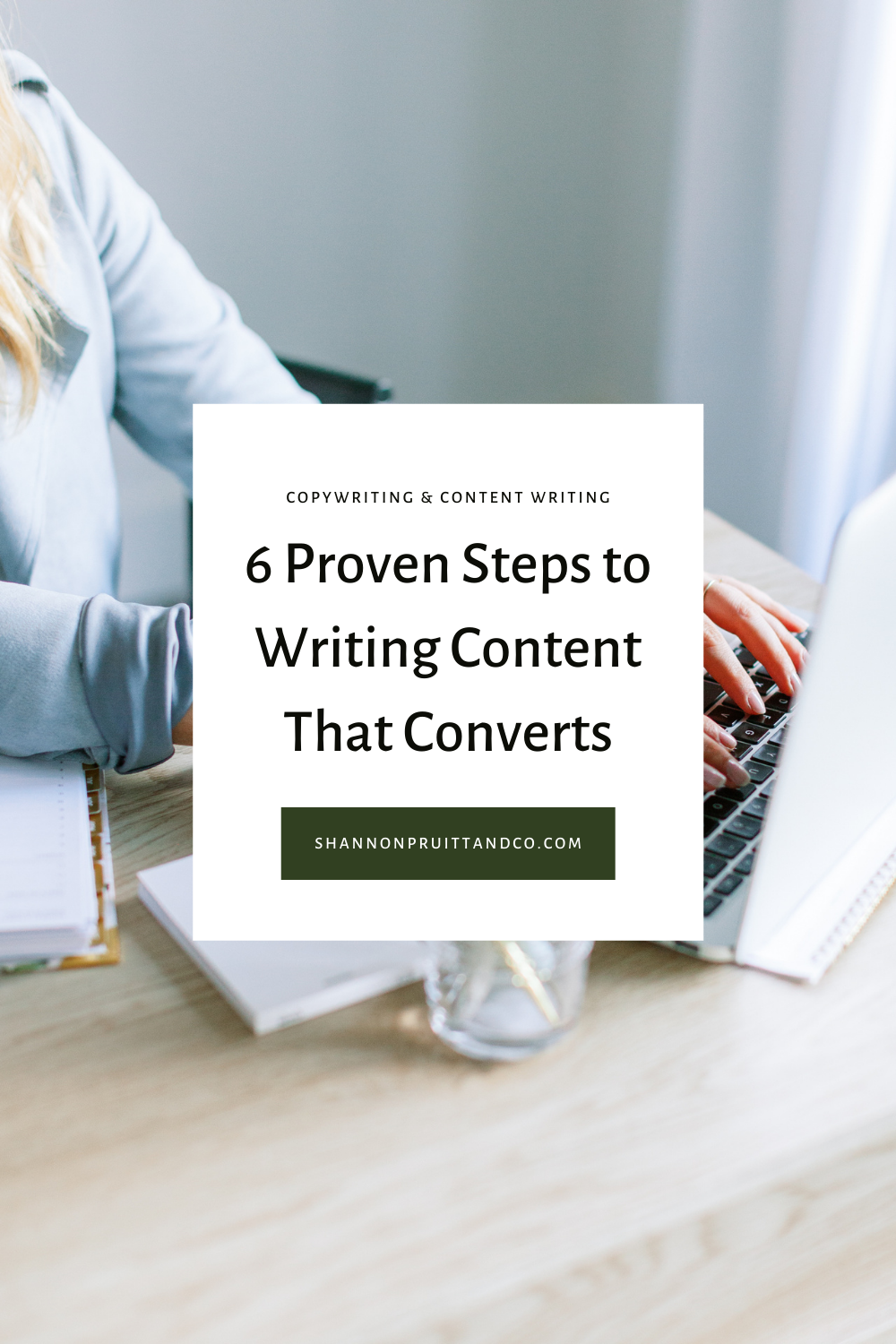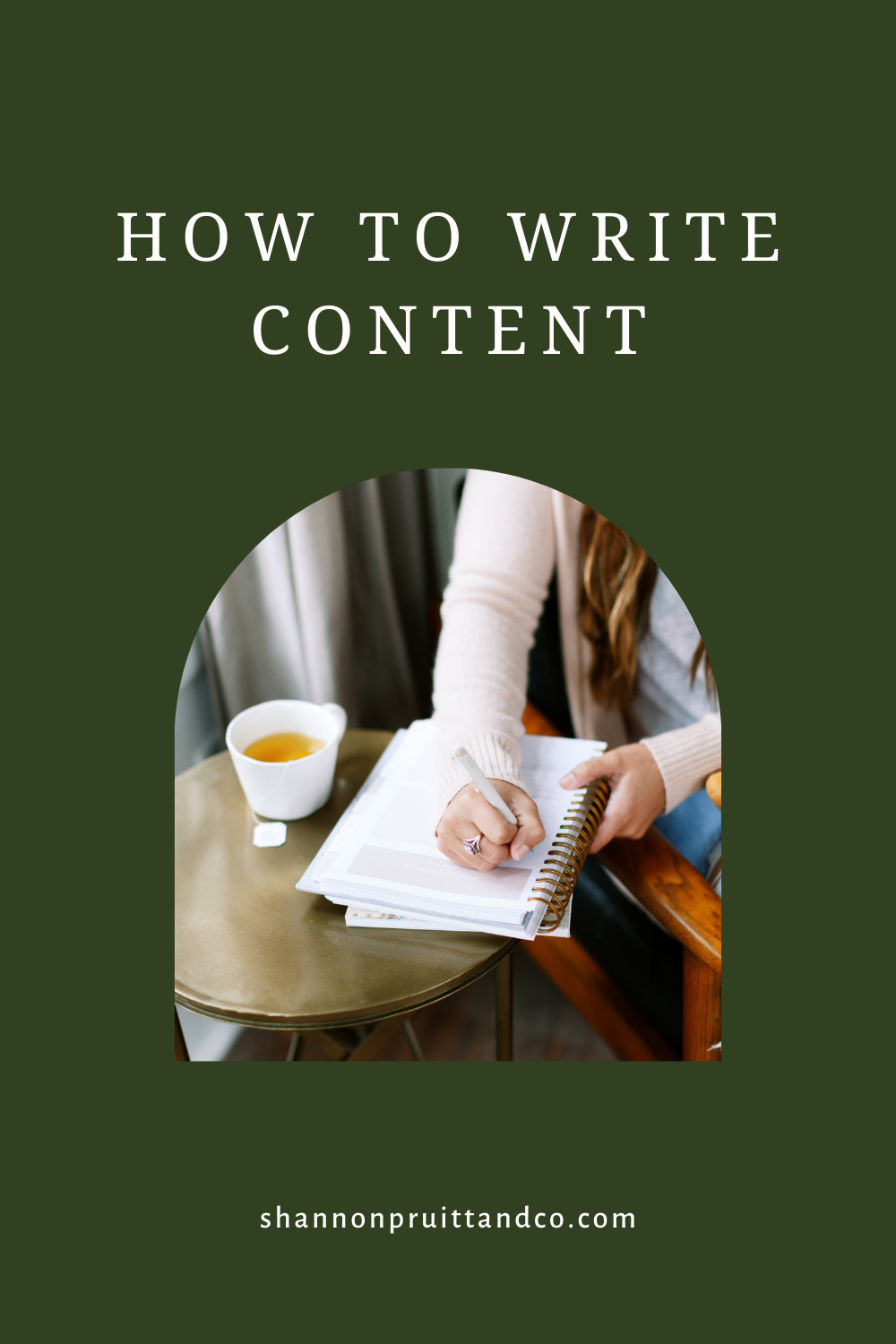6 Proven Steps to Writing Content that Converts
Are you stuck when it comes to writing content for your brand? When you sit down to outline your scripts for your YouTube videos, Instagram Stories, and Facebook Lives, do you run into Writer’s Block? I’ve been there. It sucks.
But you don’t have to feel stuck. Below is my time-and-time again proven strategy on writing great content that hooks your reader/viewer and actually converts them into becoming a paying customer. And honestly? If you paid attention at all in any of your English classes, you likely already know all of this… you may just have to dig back in the archives for it… or keep reading to be reminded of it ;)
1) Keep an idea bank.
Keep a batch list of ideas to write about. It doesn’t really matter where you keep it: a note on your phone, Trello, Google Docs, Asana, an old-school notebook, etc. Just keep a running list. Anytime someone asks you a question about your product or service, write it down (especially if you get asked that question a lot!).
2) Create a calendar.
Every year, create a calendar of what your sales goals are. If you know you are going to launch a new product or service in Quarter 3, then write that down on the calendar. If you know you’re going to focus on a particular product or service in Quarter 1, write it down. That way, as your batch list of ideas grows, you can figure out where to plug in your content so it best serves you, your brand, and your sales goals.
3) Zero in on your goal.
Make sure you have a clear focus on what the actual point of this blog, email, or video is… What’s your ultimate goal? What do you ultimately want your reader/viewer/customer to do after reading or watching your content? What keywords do you need to include?
4) Create an outline.
Outline what you’re going to write about (blogs, emails, etc.) or talk about (YouTube videos, IGTVs, Reels, Facebook Lives, etc.). Things to include as you outline (stolen from my English teaching days…see? You do use some of what you learned in school later in life…):
Hook your reader/viewer
You need to include some sort of “hook” to capture your reader or viewer’s attention. A short story, a mind-blowing statistic or fact, a customer testimonial, and asking a question are all really great ways of hooking your reader.
Add the meat of your message
You obviously need to talk about the main subject. Whether you are teaching your audience something, explaining something, or simply encouraging them, there’s got to be some “meat” to what you’re saying. I highly recommend including no less than 3 and no more than 5 sections or subheadings here.
Wrap it up
You need a good conclusion. Paraphrase/summarize what you’ve told them. Give them the big idea. And end with a CTA (which should link back to what your ultimate goal was in the beginning).
Beef it up with authority-driven research, links, and stories.
If you want people to really believe you, you need to include some stuff that backs up what you’re saying. Kind of like writing an old school research paper - you need to provide proof. It also ends up giving your reader/viewer a heck of a lot more value (which builds trust… and ultimately gives a better chance that they’ll convert into paying customers). Proof can be so many things… actual studies, facts, and data… examples… quotes… mini stories… videos… infographics… photos… and the biggie: links. When you link back to your own content, you’re going to keep readers on your page (or viewers on your YouTube channel). And linking to other content that someone else has created not only helps your SEO, but might also get you noticed more.
5) Write
Now that you have everything outlined and researched, you will have a much easier time writing the content. Even if you are prepping for a video, you need some sort of script to make things smoother (and so you aren’t staring at the camera, muttering “um” too much).
6) Proofread and Double-Check!
Nothing is worse to me than reading a piece of content that has grammatical errors all over it. Where’s my pink pen?! (Fun fact - when I was teaching middle and high schoolers, I tried so very hard to NEVER use a red pen. I used purple, pink, orange, green… anything but red. There’s something about getting a paper back with red ink scribbled all over it that makes me cringe.) So please - if you are writing content that is meant to be read, proofread it. And then double-check it again. A great online tool to use is Grammarly. Highly recommend.
Would you rather have some more hands-on help with writing some of your content?
Good news. I can help with that. Let’s set up a time to chat.









